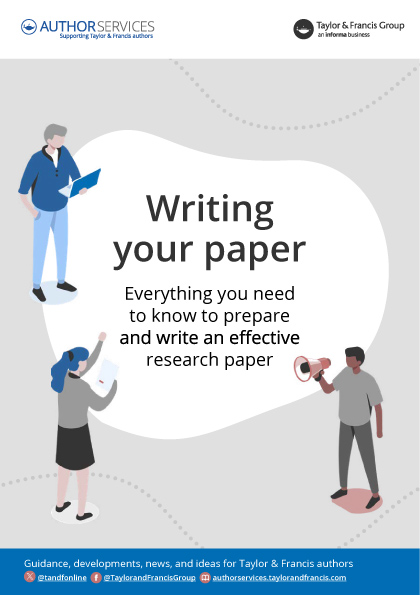| Copyright option | Distribution | Derivative works | Translation | Adaptation | Commercial reuse | Original author credited | Same license used for secondary works |
|---|---|---|---|---|---|---|---|
| Assignment | NO | NO | NO | NO | NO | YES | NO |
| Exclusive license to publish | NO | NO | NO | NO | NO | YES | NO |
| Attribution (CC BY) | YES | YES | YES | YES | YES | YES | NO |
| Attribution Non-commercial (CC BY-NC) | YES (Non-commercial) | YES (Non-commercial) | YES (Non-commercial) | YES (Non-commercial) | NO | YES | NO |
| Attribution Non-commercial Non-derivatives (CC BY-NC-ND) | YES (Non-commercial) | NO | NO | NO | NO | YES | NO |
Understanding copyright for journal authors
What is copyright?

Copyright is a type of intellectual property right which protects original creative works, including literary works such as academic articles. Copyright laws grant a copyright owner certain exclusive rights for a designated term of copyright protection (today, typically life of the author plus 70 years). This includes the exclusive right to reproduce, create adaptations of, and distribute a work.
As an author publishing with Taylor & Francis, you can choose how to allocate your rights. We offer two different publishing models – open access and subscription (non-open access) – which each take a different approach to allocation of those rights. During the Taylor & Francis publishing process authors are issued an “author publishing agreement,” through which we obtain the rights needed to publish and disseminate your article based on the model chosen.
It is important to understand differing copyright options as an author, especially with the growth of open access publishing. Here, we describe how copyright licensing or transfer applies for Taylor & Francis open access and subscription (non-open access) publications.
Find out more about article publishing charges, embargo, and license information with the Open Access Cost Finder.
Copyright in open access articles
For an open access article, in return for payment of an article publishing charge (APC) by the author or their funder, Taylor & Francis will make the article available on an open access basis, allowing broad access and re-use according to the author’s licensing selections. Taylor & Francis will also validate, produce, disseminate, and act as steward in the long-term curation of the article, including managing any updates or changes to it, so that readers can have confidence that the version they are viewing is the latest version of record. In the open access model, publishing activities are funded by the APC, paid prior to publication, and Taylor & Francis therefore can be more flexible on the rights it needs.
When publishing open access, the author (or copyright owner, if different) signs an author publishing agreement in which they retain copyright and give Taylor & Francis the right to publish the Version of Record of the article. The agreement incorporates the Creative Commons license of the author’s choice, which will dictate what others can do with the article once it has been published. Find out which licenses your chosen journal offers by using the open access cost finder.
Publishing tips, direct to your inbox
Expert tips and guidance on getting published and maximizing the impact of your research. Register now for weekly insights direct to your inbox.
Attribution (CC BY)

Others can distribute, remix, tweak, and build upon the article, even commercially, as long as they credit you for the original creation.
Attribution-Non-commercial (CC BY-NC)

Others can remix, tweak, and build upon the work non-commercially, and although their new works must also credit you for the original creation and be non-commercial, they don’t have to license their derivative works on the same terms.
Attribution-Non-commercial-No Derivatives (CC BY-NC-ND)

Others can download the work and share it as long as they credit you for the original creation, but they can’t change it in any way or use it commercially.
Please visit the Creative Commons website for more details about licenses.
Copyright in subscription articles
For an article published in a subscription journal, as with an open access article, Taylor & Francis will validate, produce, disseminate, and act as steward in the long-term curation of the article. Taylor & Francis may also handle re-use requests. In the subscription model, the author receives these services for free, and instead Taylor & Francis recoups its investment in the above services by selling access to the content. In order to achieve this, the owner of the applicable journal (e.g. a learned society or Taylor & Francis) typically requires a transfer or “assignment” of the copyright in the article.
As is the case for open access publishing, when publishing in a subscription journal, the author (or copyright owner of the article, if different) signs an author publishing agreement. The agreement incorporates the necessary transfer of copyright.
After assigning copyright, you will still retain the right to:
Be credited as the author of the article.
Own and exercise any trademark or patent rights held by you and addressed in the article.
Make printed copies of the article to use for a lecture or class that you are leading on a non-commercial basis.
Share the article using your free eprints with friends, colleagues and influential people you would like to read the work.
Include the article in your thesis or dissertation.
Present the article at a meeting or conference and distribute printed copies of the article on a non-commercial basis.
Post the Author’s Original Manuscript (AOM)/Accepted Manuscript (AM) on a departmental, personal website or institutional repositories depending on embargo period. To find the embargo period for any Taylor & Francis journal, please use the Open Access Options Finder.

For more information about manuscript versions and how you can use them, please see our guide to sharing your work.
If you choose to publish the article in a Taylor & Francis or Routledge journal, there are many ways you can share different versions of your work with colleagues and peers. Use our article sharing guide to understand manuscript versions and how you can use them.
Taylor & Francis commitments for all articles
Whether publishing on an open access or subscription basis, Taylor & Francis will:
Validate, produce and disseminate the article in accordance with the publication model chosen;
Act as steward in the long-term curation of the article, including managing any updates or changes to the article, and managing any ethics disputes that arise, so that readers can have confidence that the version they are viewing is the latest and most complete version of record
Additionally, where appropriate to do so, Taylor & Francis may also take action to protect the article after publication where it has been infringed or plagiarized, or is the subject of fraudulent activity, or gives rise to other legal concerns.
Other forms of license
Other forms of copyright license may be available depending on your specific circumstances – for example, US government employees may receive a license which acknowledges some limits around rights in the event the article was created in the scope of their employment for the US government. Also, there may be some circumstances where Taylor & Francis will accept a non-exclusive license, in lieu of an assignment, for publication in a subscription journal. These options can be addressed during the production process, where applicable.
Understanding article reuse
Each license offers different reuse rights. The table below gives a quick overview of how others can use your work, based on the relevant license.
Frequently asked questions
What if I do not own the copyright in the article I have written?
We seek to accommodate authors who are employees of governments, international organizations, or commercial corporations. Such entities will generally own copyright in works created as part of an employee’s employment.
Such entities will normally issue and grant Taylor & Francis a “non-exclusive” license to publish. In such situations, the publishing agreement stipulates that in doing so, such entities recognize Taylor & Francis as the sole licensee for the publication of the final, definitive, and citable Version of Scholarly Record.
If you work for World Health Organization (WHO) or the World Bank they will retain copyright in the article and authors negotiate whether exclusive or nonexclusive rights are given.
If you are employed by the UK Government, your work is covered by Crown Copyright. Crown Copyright applies to material which is produced by Crown employees during their work. Therefore, most material originated by ministers and civil servants is protected by Crown Copyright.
If you are employed by the US Government, your work is covered by the US Government Copyright.

If I have used any third-party material, whether previously published or not, do I need to acknowledge this?
Yes. You will need to obtain written permission in advance from any third-party owners of copyright for the use in print and electronic formats of any of their text, illustrations, graphics, or other material, in your article and in our journals. The same applies to any other rights held by third parties such as trademarks, design rights, database rights and rights relating to private information and confidentiality.

Taylor & Francis is a signatory of, and respects, the spirit of the STM Permissions Guidelines regarding the free sharing and dissemination of scholarly information. As such, we participate in the reciprocal free exchange of material. It is also important to ensure you acknowledge the source of the original content.
For further details please read our guide to using third party material in your article.
Useful links
UK Intellectual Property Office’s What is copyright? guide.
US Government’s Copyright Office guide to copyright.
World Intellectual Property Organization guide to copyright.
